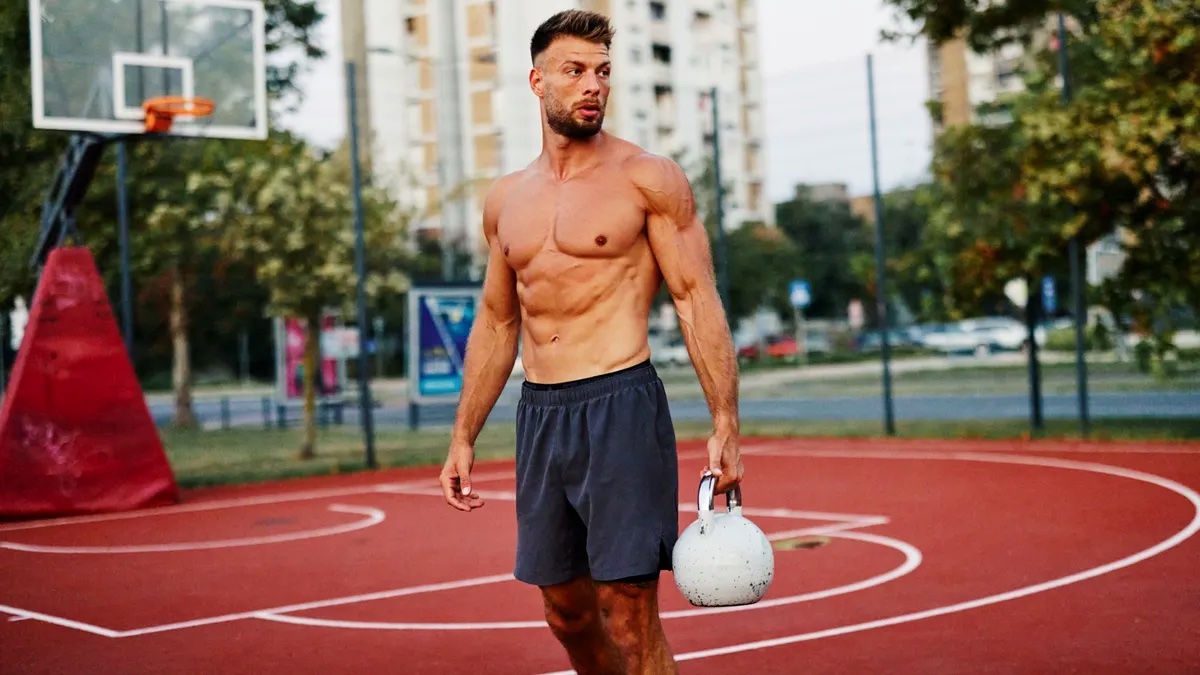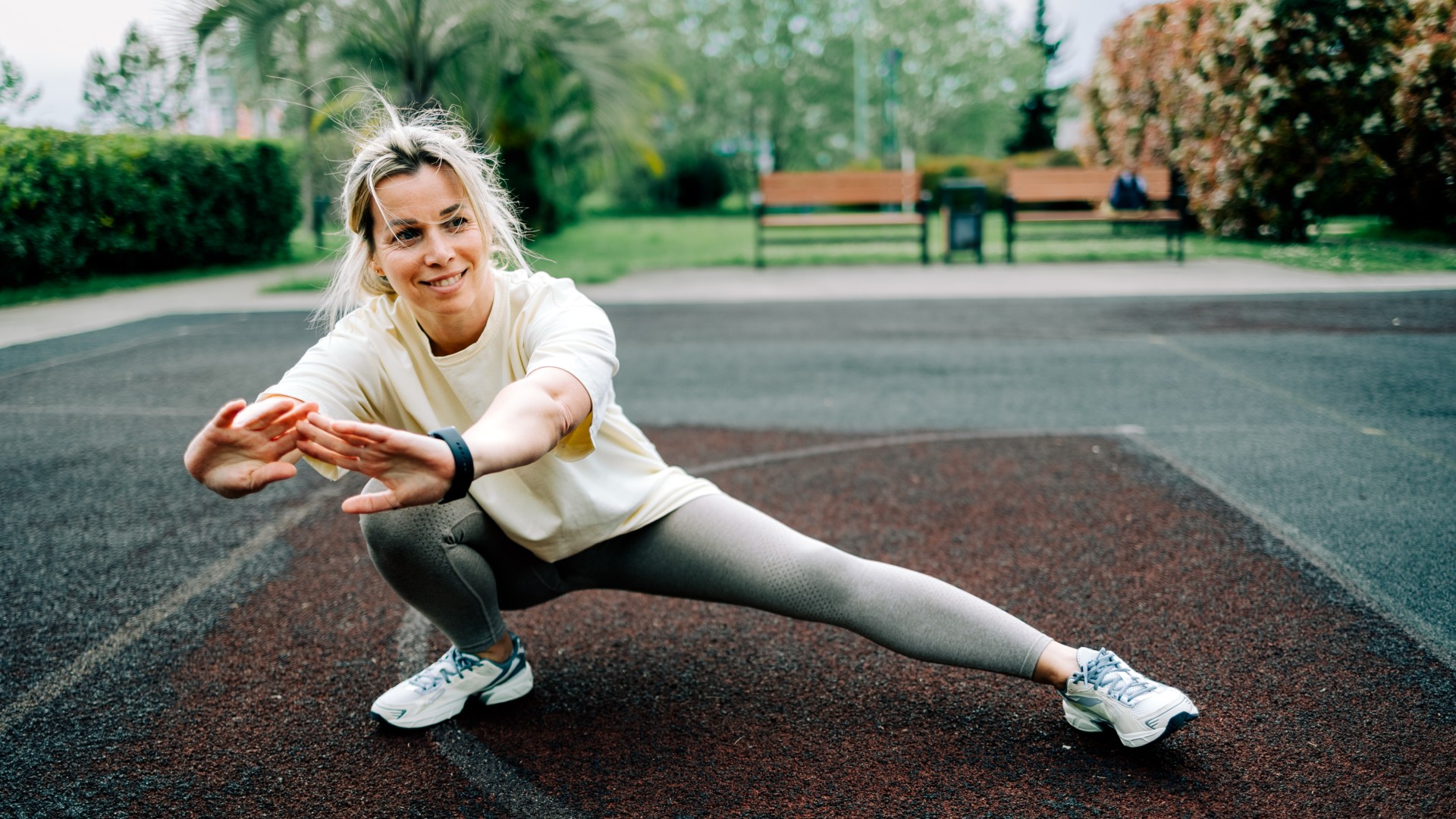
I know many people who swap lunges for lower-body alternatives like reverse lunges, Cossack squats, step-ups, or wall sits. These are all worthwhile options, but I have one exercise I love to use instead.
The suitcase deadlift engages and strengthens various leg muscles, including the quadriceps, hamstrings, hips, lower back, glutes and core, all while remaining low-impact on your knees and increasing functional strength.
As the name suggests, this deadlift variation mimics the motion of hinging at the hips and bending down to pick up suitcases to carry. Of course, this was when people carried suitcases rather than wheeling them, but you get the idea.
Below, I cover how to do a suitcase deadlift and the benefits. The best part is, you can use the best kettlebells (my favorite), dumbbells, resistance bands, or even a trap bar if you have one. Here’s everything you need to get started.
What to do if lunges hurt your knees

It’s as simple as this: adapt or avoid. If lunge variations don’t work for you, such as reversing your lunges, reducing how far you lower your knee, or trying exercises like the side lunge or Cossack squat, then I would recommend moving them to one side.
Joint pain is incredibly common, whether it’s from an exercise-related injury, age, or a health condition. Thankfully, the library of exercises available is vast, so there’s always an alternative to lunges if your goal is to strengthen your legs. Squats, lunges and deadlifts are crowned the kingpins when it comes to building maximal lower-body strength, but you can adapt them endlessly.
Most of my clients who suffer from knee pain respond well to the suitcase deadlift, and we typically start with light weights, then gradually increase them. The goal is to reduce the impact on your knees and ankles and move in an alternative plane of motion to the lunge. If you can do that safely and without pain, there’s no reason to avoid load.
Get instant access to breaking news, the hottest reviews, great deals and helpful tips.
How to do suitcase deadlifts
If you use dumbbells, hold them so that you can tap one end of the dumbbells to the floor with every rep. If you plan to use kettlebells, place them down on the floor with every rep, then lift them from the floor. You can also learn how to do trap bar deadlifts if you want to build to a much heavier load over time.
- Hold a weight in each hand and stand with your feet hip-width apart
- Softly bend your knees and engage your core
- Drive your hips backward and hinge at the hips, maintaining a flat back
- Lower the weights to the ground, either side of your feet, allowing the weights to travel close to your sides
- Keep your back straight, chest lifted and shoulders pulled back and down
- Pause, squeeze your lats and core muscles, then drive up to stand and extend your hips and legs.
What are the benefits?
The hip hinge is synonymous with deadlifts, and hip flexion and extension allow you to bend down and pick something up. Of course, this is a functional movement, which means you’re strengthening the muscles used to perform a common type of movement you might do daily, but it also doesn’t load the knees in the same way that lunges do.
During a lunge (above), you will either step your leg forward or backward into a split-leg position, then lower toward the ground. For some people, this causes pain; as you step forward, the load on the front quad and knee can be an uncomfortable impact, for others, the angle of the back leg — often due to form, but not always — can create problems.
Many people also struggle with stability and balance in this position. While ensuring your feet are positioned more like they’re on train tracks rather than a tightrope can help, there’s no guarantee it will fix the problem.
During the suitcase deadlift, your feet remain hip-width apart with the load on either side of your body, and there’s a reduced range of motion through the knees. You should feel the deadlift in your quads and hamstrings with greater comfort in the joints, thanks mostly to the hip hinge and stable foot position.
An added benefit to this exercise is that you’ll strengthen your forearms and grip by holding weights at your sides. Grip strength is an indicator of longevity and overall health, so strengthening yours could be beneficial in the future.
Aim for 8-12 reps and 3-4 sets, and you can also learn how to deadlift with perfect form using our helpful guide.
More from Tom’s Guide
Follow Tom's Guide on Google News and add us as a preferred source to get our up-to-date news, analysis, and reviews in your feeds. Make sure to click the Follow button!
- This 7-minute glute workout
- Forget the frog stretch — these are the first 3 essential exercises I teach to build strong, robust hips and improve mobility
- 6 of the best exercises to strengthen your knees

Sam Hopes is a level 3 qualified trainer, a level 2 Reiki practitioner and fitness editor at Tom's Guide. She is also currently undertaking her Yoga For Athletes training course.
Sam has written for various fitness brands and websites over the years and has experience across brands at Future, such as Live Science, Fit&Well, Coach, and T3.
Having coached at fitness studios like F45 and Virgin Active and personal trained, Sam now primarily teaches outdoor bootcamps, bodyweight, calisthenics and kettlebells.
She also coaches mobility and flexibility classes several times a week and believes that true strength comes from a holistic approach to training your body.
Sam has completed two mixed doubles Hyrox competitions in London and the Netherlands and finished her first doubles attempt in 1:11.
You must confirm your public display name before commenting
Please logout and then login again, you will then be prompted to enter your display name.
